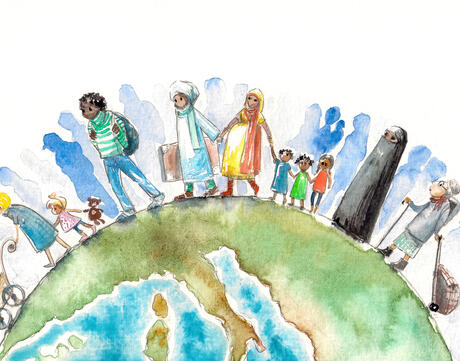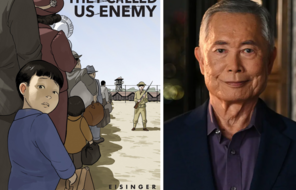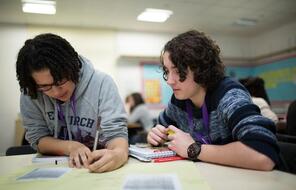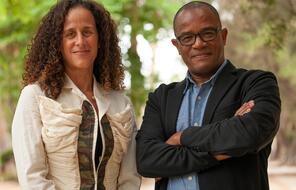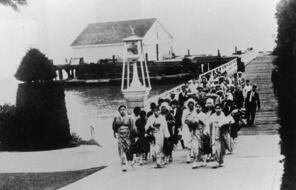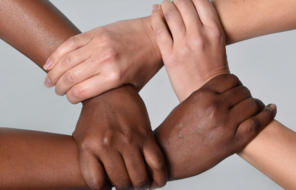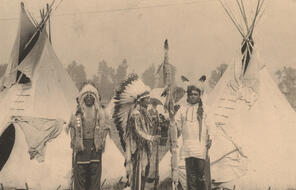October 3 marks the anniversary of the signing of the Immigration and Nationality Act of 1965, which both repealed a number of outdated and discriminatory immigration practices and launched a new era in US immigration policy that has remained largely unchanged in the decades since. As issues of immigration and migration continue to make headlines all educators are welcome to take advantage of our growing library of curricular resources that help students understand key historical migrations, the impact of the policies surrounding them, contemporary migration issues shaping our world, and the ways that migration shapes individual and national identity.
Check out 8 resources below designed to help educators address immigration in the classroom with curiosity and confidence:
Immigration and Identity in History
Angel Island Immigration Station: Exploring Borders and Belonging in US History
In this C-3 style inquiry, students engage with the history of the Angel Island Immigration Station to think critically about the concept of borders —not simply geographic borders but the social, economic, and political boundaries erected throughout US history to separate “in” groups from “out” groups.
As they explore historical and contemporary sources, students will draw connections between the exclusionary US immigration policies of the late nineteenth and early twentieth centuries and the borders that exist within American society today.
The Legacies of Chinese Exclusion
The Chinese Exclusion Act was the first law to restrict US immigration on the basis of race. The activities in this mini-lesson engage students in an exploration of the historical context and consequences of the 1882 legislation, drawing connections between the exclusion era and today. They also invite students to analyze a letter of protest from Chinese immigrant Saum Song Bo and consider how immigrants themselves played a role in shaping notions of democracy and citizenship within a polity that excluded them.
My Part of the Story: Exploring Identity in the United States
My Part of the Story is a collection of six lessons designed to launch a course about United States history, literature, or civic life through an examination of students’ individual identities. Adolescence is a time when many young people struggle with issues of independence, trust, freedom, and responsibility. It is also a time when life centers around peer groups and mutual relationships. The materials in this unit support and challenge students in their efforts to define their own identity and their relationship to society as a whole. This approach empowers students to develop their own voices in both the classroom and the world at large, and it engages students in a study of the United States by showing them that their voices are integral to the story of the country.
Contemporary Migrations + Immigrant Experiences
Why Do People Migrate?
This mini-lesson is designed to help students consider their own connections to migration and to learn about migration from El Salvador to the United States as a means of exploring the immediate and underlying factors that drive migration.
What is our Obligation to Asylum Seekers?
This mini-lesson helps students understand how the asylum process works in the United States and also consider the question: Who has an obligation to help asylum seekers?
Different Perspectives on Migrant Detention
This mini-lesson is designed to give students insight into migration and migrant detention through different perspectives—migrants who were detained, an immigration lawyer and advocate, a border guard, and an immigration judge. Examining this issue through different perspectives can help students gain important insight into the situation in detention centers and engage in ethical reflection about the treatment of migrants at the border. However, descriptions of the conditions in some facilities are disturbing, and it is important to review materials to determine if they are appropriate for your students.
Brave Girl Rising: A Refugee Story
Nasro is a Somali-born girl living in the world’s largest refugee camp in Kenya and she is the subject of the extraordinary film Brave Girl Rising. Produced by the creators of the 2013 film Girl Rising and released to mark International Women’s Day, this 17-minute film shares Nasro’s story as told by the Somali poet Warsan Shire. Created in partnership with Girl Rising, this mini-lesson invites students to engage with Nasro’s story, examine the challenges she faces, and the strength she discovers. They also explore how an individual’s story, told with rich imagery and language, can spark empathy and ethical reflection on an issue whose vast scale can be difficult to grasp.
Teaching Enrique’s Journey
Watch this on-demand webinar to explore the young adult version of Enrique's Journey, a powerful biography written by journalist Sonia Nazario for which we offer a robust teaching unit. When Enrique was five, his mother, too poor to feed her children, left Honduras to work in the United States. She promised she would return quickly, but she struggled in America. After eleven years, he set off alone, and without money, to find her. This book, based on a Pulitzer-prize winning series in the Los Angeles Times, chronicles his harrowing journey to be reunited with his mother, providing insight into the realities of immigration and the people who risk so much for a chance to live in the United States.
Don't miss out!
- download classroom materials
- view on-demand professional learning
- and more...

